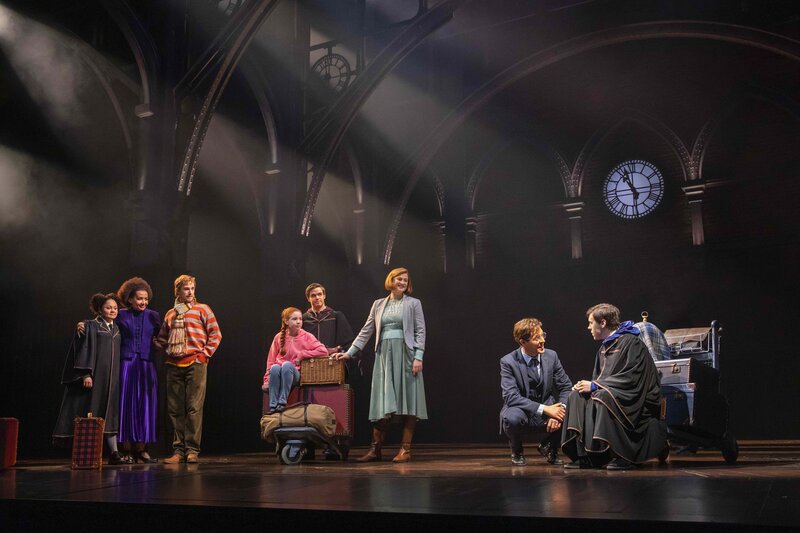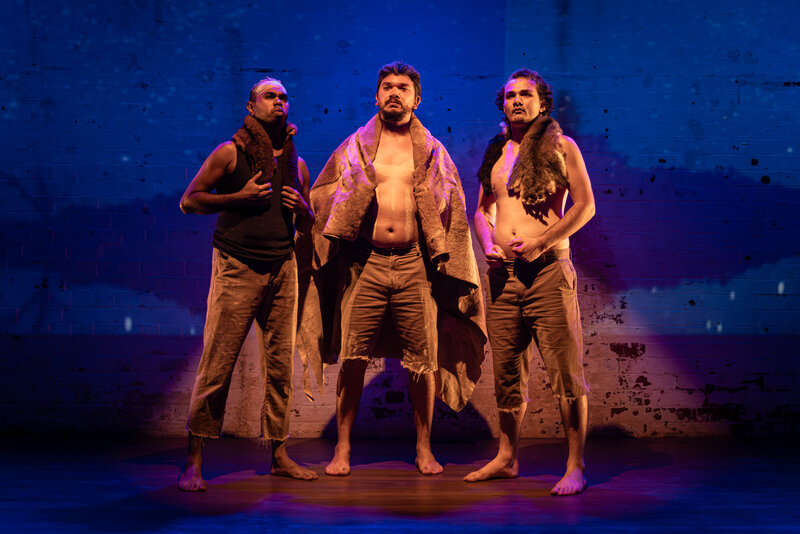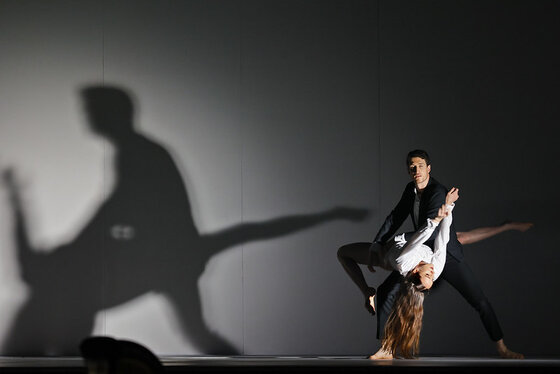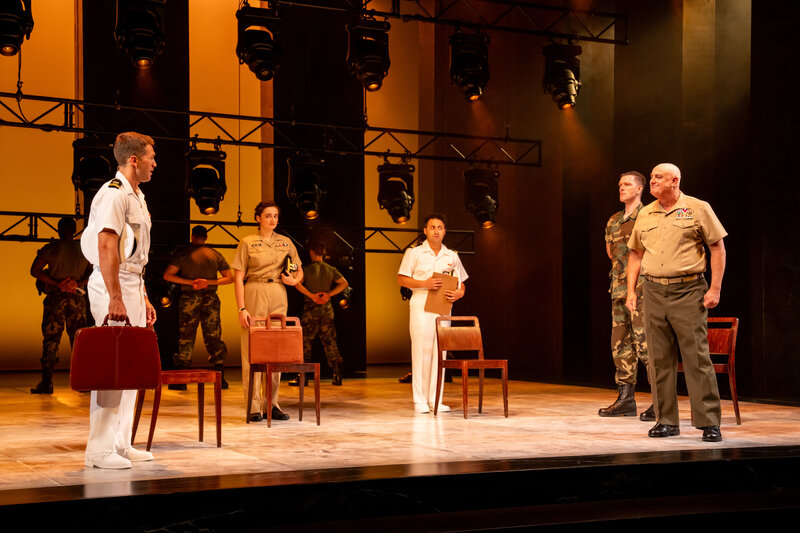Harry Potter is casting a spell over Melbourne anew, as well it deserves to. How fitting, as speculation mounts about expanding the eight film Potter series, the last of which was released in 2011. As the saying goes, there is a lot of love in the room for this production at the Princess Theatre.

You can readily follow the narrative, even with only a passing knowledge of the Potter universe. Mind you, I dare say the greater your understanding of the books and movies, the more you will appreciate what is on offer. And I’m here to tell you it is extensive.
The story starts 19 years after the events of the 2007 novel Harry Potter and the Deathly Hallows. It moves along at pace and primarily centres around the sons of two original Harry Potter characters that have locked horns since they were kids. I speak of the offspring of Harry Potter and Draco Malfoy.
Albus Severus Potter is a decidedly different cat to Harry and is forever living under his father’s giant shadow. For his part, Harry wants to connect with Albus, but try as he does simply can’t seem to find common ground. Draco, too, struggles for connection with his son, Scorpius, who is chuffed that Harry Potter’s child would even talk to him, let alone befriend him on the train to Hogwarts School of Witchcraft and Wizardry on their first day together.
 To the shock, amazement and ridicule of his fellow students, Albus, like Scorpius, is assigned to the house of Slytherin, that traditionally associated with the Dark Arts, not Gryffindor, which is a Potter stronghold. Beyond that, evil sorcerer Lord Voldemort’s dark forces are gathering momentum. Harry, now Head of the Department of Magical Law Enforcement at the Ministry of Magic, and Hermione Grainger, the Minister of Magic, have their hands full dealing with that.
To the shock, amazement and ridicule of his fellow students, Albus, like Scorpius, is assigned to the house of Slytherin, that traditionally associated with the Dark Arts, not Gryffindor, which is a Potter stronghold. Beyond that, evil sorcerer Lord Voldemort’s dark forces are gathering momentum. Harry, now Head of the Department of Magical Law Enforcement at the Ministry of Magic, and Hermione Grainger, the Minister of Magic, have their hands full dealing with that.
Still, Albus and Scorpius’ wellbeing remain a priority for Harry and his wife Ginny Weasley, and Scorpius’ dad Draco, notwithstanding any barriers that stand in the fathers’ and their sons’ way. Albus and Scorpius get themselves into a heap of trouble trying to rewrite the past using a Time-Turner, and, in so doing, upset the equilibrium of the world into which they were born.
The special effects are an undoubted highlight of Harry Potter and the Cursed Child and there are so many – from a simple “lit up” nose at the start to ghostly apparitions at the end of Part l that reappear in Part II. Fire is a constant thread, as are “magical” appearances, disappearances and reappearances, along with secret panels and “surprises” in the body of the theatre.
 That is not to forget the impressive way the creatives have orchestrated time travel, where you swear the set is shaking. The illusions and magic consultant is Jamie Harisson. Mood lighting by Neil Austin and, at times, tremor-like sound by Gareth Fry play a big part in bringing the story to life. Harry Potter and the Cursed Child is magnificently choreographed (movement has been coordinated by Steven Hoggett).
That is not to forget the impressive way the creatives have orchestrated time travel, where you swear the set is shaking. The illusions and magic consultant is Jamie Harisson. Mood lighting by Neil Austin and, at times, tremor-like sound by Gareth Fry play a big part in bringing the story to life. Harry Potter and the Cursed Child is magnificently choreographed (movement has been coordinated by Steven Hoggett).
There is a great deal going on most of the time, so a lot can go wrong. But the performers are so well practiced and drilled that they make everything look natural and effortless. Props (especially a couple of flights of “heavy set” stairs) are wheeled in and out in seconds. Characters – and, on occasion, their suitcases – intersect fluidly and frequently. No awkwardness, no collisions, no missing cues. The costuming by Katrina Lindsay – especially the dark, elegant attire and black, flowing capes of the evil doers – add to the aura of dread that permeates the story arc. I thought Christine Jones’ inventive set designs transported us to the Potterverse with ease.
The cast – particularly those doing the heavy lifting – deserves universal praise and acclamation. Among the standout performers are those “gifted” some of the showiest roles. I was impressed by the nuanced, self-deprecating performance of Nyx Calder as Scorpius Malfoy. Tom Wren makes an immediate impact as his father, the no nonsense Draco, carrying a stern visage throughout. It’s a joyful, exuberant entrance for Gillian Cosgriff as Delphi Diggory, before her persona develops.
 Also impactful is David Ross Paterson as the severe Hogwarts’ Potions Professor Serevus Snape, when he first appears opposite Scorpius Malfoy. To much mirth, Jessica Vickers gives Moaning Myrtle a good working over in her limited time on stage and makes it count. Debra Lawrance as Professor Minerva McGonagall, the headmistress at Hogwarts during Albus and Scorpius’ years, puts in an emotion-charged showing and is particularly impactful in the second act.
Also impactful is David Ross Paterson as the severe Hogwarts’ Potions Professor Serevus Snape, when he first appears opposite Scorpius Malfoy. To much mirth, Jessica Vickers gives Moaning Myrtle a good working over in her limited time on stage and makes it count. Debra Lawrance as Professor Minerva McGonagall, the headmistress at Hogwarts during Albus and Scorpius’ years, puts in an emotion-charged showing and is particularly impactful in the second act.
When I first saw Harry Potter and the Cursed Child two years ago, I saw Parts I and II on the same day. This time I spread my excitement and joy over two consecutive nights. Regardless of which combination you choose, the pleasure is immense. It is a great show, brilliantly written by Jack Thorne from a story by J.K. Rowling, Thorne and John Tiffany, skilfully orchestrated and masterfully directed by Tiffany, which is well worth a second … and a third look.

I loved it first time around and, if this is even possible, adored and embraced it even more with this second look. Harry Potter and the Cursed Child is on at the Princess Theatre.
Alex First
Other reviews you might enjoy:
- Harry Potter and the Cursed Child (Princess Theatre) – theatre review
- Harry Potter and the Cursed Child Parts 1 and 2
- Mamma Mia! (Princess) – theatre review

Alex First is the editor of The Blurb. Alex is a Melbourne based journalist and communications specialist. He also contributes to The Blurb on film and theatre.





